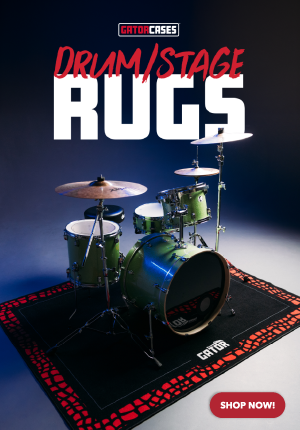If you want to know how efficiently your inventory is working for you, look no further than GMROI, or Gross Margin Return on Investment. This key retail metric tells you how many dollars of gross profit you’re making for every dollar you’ve invested in inventory. For music store owners and managers, it’s one of the clearest indicators of how well your product selection, pricing and inventory control are performing.
GMROI is often misunderstood as simply being about how fast you sell product, i.e. turnover. But the truth is, it’s a balancing act involving three critical levers: carrying less inventory, selling more inventory, and selling inventory more profitably. Improve any one of those, and your GMROI goes up. But the challenge? Changing one often impacts the others.
Understanding the GMROI Equation
The formula for GMROI is simple: GMROI = Gross Margin/Average Inventory Cost. It measures the return you generate for each dollar tied up in inventory. The higher your GMROI, the better, because it means you’re generating more gross profit per dollar of inventory investment.
A low GMROI doesn’t automatically mean you’re losing money, but it can signal inefficiencies in your buying process, pricing strategy or sales execution. Excess inventory, low-margin products,or sluggish sell-through can all drag the metric down.
According to Strata:G, a retail analytics firm that specializes in benchmarking and performance tracking for independent retailers, the GMROI trend for music instrument retailers has declined over the last five years. In 2024, the industry benchmark GMROI was 1.3 — meaning the average retailer generated $1.30 in gross profit for every $1.00 invested in inventory.
To improve GMROI, you need to either:
1. Reduce how much inventory you carry.
2. Sell more inventory (increase turnover).
3. Increase your margins.
The trick is optimizing these levers together — not maximizing just one.
The Balancing Act in Action
Let’s say you improve GMROI by reducing inventory levels. Makes sense — less inventory means a lower denominator in the GMROI equation. But go too far, and you risk stocking out on popular items, missing sales and frustrating customers. Or maybe you aim to increase turnover by discounting heavily. Sales may rise, but if margins shrink, your overall GMROI may flatline — or drop.
Want to raise prices to boost margin? That works if customers still buy. But if higher prices slow your turns, your gains evaporate. That’s the GMROI dance. One lever moves, and the other two shift with it. Here are three real-world strategies to improve your GMROI.
1. Carry Less Inventory (But the Right Inventory)
Don’t slash inventory across the board. Use sales data to identify slow movers and reduce their footprint. Invest more in fast-turning, high-margin items with predictable demand. Avoid overbuying based on gut feeling or vendor pressure. Use open-to-buy plans and historical sales data to guide your purchasing.
2. Sell More, Faster
Improve turnover without sacrificing margin through strong merchandising and training. Feature best-sellers and high-margin items prominently. Rotate displays and use targeted promotions to move aged inventory—not your newest stock. Train your sales team to recommend accessories, upgrades, and complementary items. These add-ons increase average transaction size and help inventory turn faster.
3. Sell More Profitably
Improving margin comes from sourcing smarter and selling smarter. Look at your vendor relationships. Can you consolidate purchases for better terms? Are there private label or house brands that offer better margins? Then look to your sales team. Are they equipped to sell value over price? Focus on the benefits of buying local, expert advice, and personalized service. Bundle in setups or extended warranties—and price those services accordingly.
Improving GMROI isn’t about squeezing one lever until it breaks. It’s about balance. Even small changes — trimming dead stock, refining your buys, and training your team — can lead to real gains in profitability.
Start by identifying which lever is weakest. Is inventory sitting too long? Are margins thinner than expected? Are products flying off the shelves, but profit isn’t following? Then implement one targeted change and measure the results.
When you get the balance right, GMROI becomes more than just a metric — it becomes a reflection of a healthy, profit-focused retail operation. MI
Amanda Rueter is the vice president of finance and operations at Ernie Williamson Music, a six-location dealer headquartered in Springfield, Missouri.














